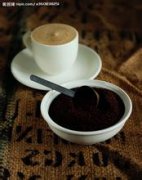A brief introduction to the History and Culture of the Origin and Development of Yellow bourbon Fine Coffee beans in the soft-scented Queen Manor of Brazil

Bourbon species, native to Bourbon Island (now Reunion Island) in the Indian Ocean, is a mutant subspecies of Typica, the oldest extant coffee species, with green fruits that appear bright red when ripe, while yellow bourbon species are hybrids of Bourbon species with other varieties. Because of its low yield and poor weather resistance, it is not widely cultivated. However, when planted at high altitudes, it will have excellent flavor performance. In recent years, it is more common to use the method of peeling and sunning (Pulped Nature), so that this yellow bourbon from Aguas Claras Estate not only has a thick sweet feeling similar to honey treatment, but also does not have the unpleasant flavor of excessive fermentation. The nose has light citrus aromas, balanced and supple acidity, rich chocolate aromas and nutty flavors, and a refreshing taste. This coffee bean is a Brazilian yellow bourbon we have recently found with high cost performance. Generally speaking, the price of yellow bourbon is much higher. Of course, its unique sweetness and thickness are much better than that of the new world species or red bourbon commonly used in Brazil. Especially in the throat rhyme department, you can feel a warm nutty flavor. Among many coffee varieties in Brazil, yellow bourbon is one of the outstanding varieties. The general bourbon will turn from green to yellow and red. Yellow bourbon, however, stays yellow in appearance, and yellow bourbon grown at high altitudes and treated in the sun has excellent flavor.
Brazil has many large farms, operating endless coffee plantations, they use machines to harvest, and use machines to dry, automated efficiency is very high, as if coffee as a general agricultural material, completely abandoned flavor and disregard. As a result, many specialty coffee companies simply do not sell Brazilian beans, lest they demean themselves. Brazilian santos still occasionally appear in select coffee shops, but they are bourban santos rather than the cheaper flat bean santos. Santos is a descendant of the Bourbon species, hence the name of the Port of Santos exit. This coffee tree in the first three or four years of the beginning of the fruit, the beans produced small and curved, excellent flavor, known as "Bourbon Santos." After that, the beans become larger, flat shape, no longer curved, become "flat bean Santos", flavor has been much less than before. In Taiwan, Brazilian coffee can be seen everywhere, but mostly flat beans Santos, in fact, Brazil still has good quality coffee beans, will be sold to the market under its own name, no longer known as "Brazilian coffee". Some farms still retain the old bourbon seed, the raw beans are small in size, curved, red in the center line, and marked with a red center. Bourbon beans taste full, thick aroma, like drinking old wine in general, is worth a try.
Brazil's research unit developed a semi-solarization method to shorten the treatment time based on the monotonous nature of Brazil's climate. After removing the pulp, the pods covered with pectin layer are exposed to the sun for one to three days, and then dried by machine to a moisture content of 12%, which can be put into storage containers. Brazil's semi-sun method significantly reduces the processing time (traditional sun method takes two to three weeks), also reduces the chance of coffee beans to get peculiar smell, and the quality is greatly improved. Moreover, the semi-sun method also inherits the advantages of the sun method to improve sweetness, but it lacks the earthy taste of non-flattery, and enhances the fruity and sweet feeling, which is most suitable for single products. Therefore, the semi-sun method has become a necessary "outfit" for Brazilian fine beans, winning praise from international coffee experts.
The reform has worked, increasing the confidence of coffee farm operators, Brazil's coffee farms will, depending on the climate humidity conditions, choose the sun, semi-sun, water, semi-water or honey treatment, which has been popular in the fine coffee world in recent years, to present the best regional flavor. For example, the ultra-low humidity Minas Cerrado in the Midwest is still dominated by solarization. The manor here believes that the solarization method only needs strict control, which can best highlight the nutty taste and sweetness unique to Serrado. The semi-solarization method has become a supporting role in Serrado. South Minas 'estate is the most inclusive, using semi-sun, sun and water washing respectively. Brazil has such a variety of treatment methods that it is rare in the world except Ethiopia, the hometown of coffee.
Brazil Chacal Yellow Bourbon, a clean water estate (Aguas Claras) belonging to Minas Llcinea region. Due to the excellent water quality of the area where the estate is located, the coffee produced has excellent standards.
products Brazil Chacal Estate Yellow Bourbon
regulations Box: 227 grams
Country of origin: Brazil
production Area: Minas Llicinea
Zhuang Garden: Falls Manor
products Species: Yellow Bourbon
such Class: 2d/300gr, 17-18 mesh
Height of origin: 1200m~ 1380m
Treatment: Sunlight
Degree of baking: medium deep baking
Palate characteristics: sweet soft fruit sweet, obvious nutty flavor, balanced soft acidity, bitter slightly clean, rich chocolate aroma and nutty flavor, bright and refreshing taste.
Suggested brewing equipment: French pressure, hand flushing, siphon
Important Notice :
前街咖啡 FrontStreet Coffee has moved to new addredd:
FrontStreet Coffee Address: 315,Donghua East Road,GuangZhou
Tel:020 38364473
- Prev

Bright and refreshing Brazilian queen estate yellow bourbon boutique coffee bean varieties planting market price profile
After removing the pulp of the coffee fruit, there is still a part of the pulp mucilage layer in the sheepskin shell. At this time, these coffee fruits still with the mucilage layer are placed on the terrace to dry, so that the moisture content is reduced to about 20%. At this stage, the coffee fruit absorbs its own starch component, but there is no full-sun method. The disadvantage of not being able to control the flavor of the drying process is because these residual mucilage layers
- Next

A brief description of the flavor, taste and aroma characteristics of boutique coffee beans in Jensen Manor, Panama.
Although the Rosa Variety was planted a few years ago, Kaduai was used in all the batches of the BOP competition and achieved good results, closely following the Emerald Manor in the number of winners. Thus it can be seen that the production of high-quality coffee in Panama is closely related to its unique geographical advantages. At the same time, the fine operation of the manor harvest and processing link determines the raw beans.
Related
- Does Rose Summer choose Blue, Green or Red? Detailed explanation of Rose Summer Coffee plots and Classification in Panamanian Jade Manor
- What is the difference between the origin, producing area, processing plant, cooperative and manor of coffee beans?
- How fine does the espresso powder fit? how to grind the espresso?
- Sca coffee roasting degree color card coffee roasting degree 8 roasting color values what do you mean?
- The practice of lattes: how to make lattes at home
- Introduction to Indonesian Fine Coffee beans-- Java Coffee producing area of Indonesian Arabica Coffee
- How much will the flavor of light and medium roasted rose summer be expressed? What baking level is rose summer suitable for?
- Introduction to the characteristics of washing, sun-drying or wet-planing coffee commonly used in Mantenin, Indonesia
- Price characteristics of Arabica Coffee Bean Starbucks introduction to Manning Coffee Bean Taste producing area Variety Manor
- What is the authentic Yega flavor? What are the flavor characteristics of the really excellent Yejasuffi coffee beans?

